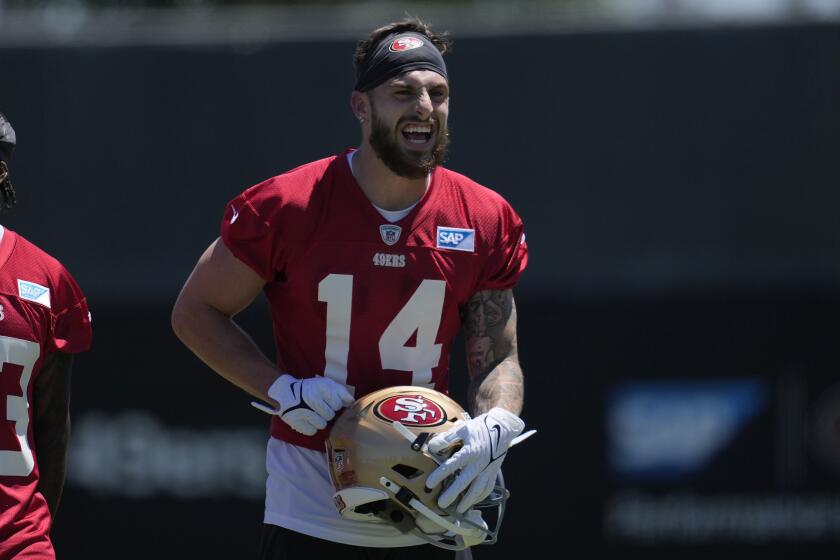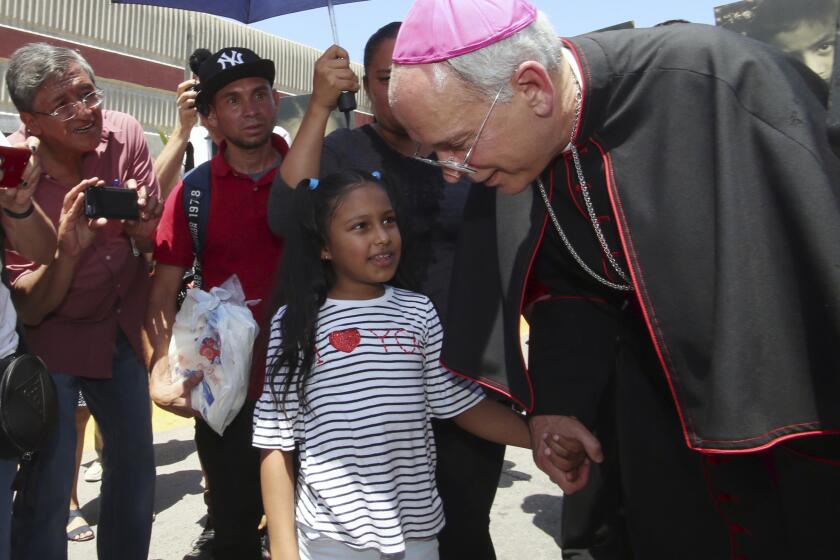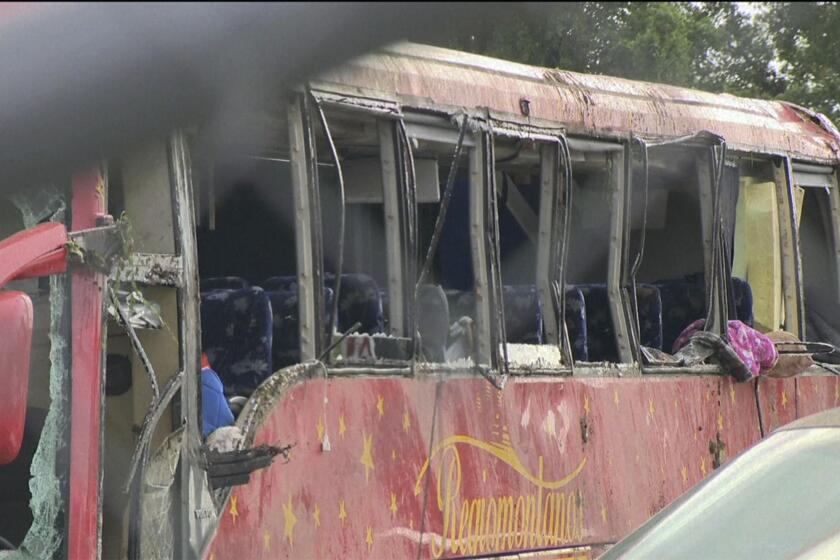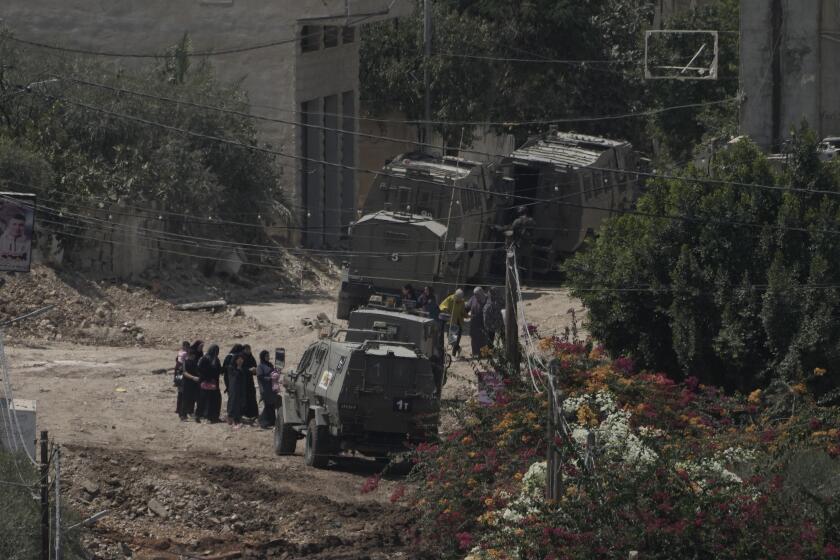PERSPECTIVE ON SOUTH AFRICA : Death Makes a Sharp Political Tool : White hands are there, but barely visible, behind the violence that has weakened the black movement.
A stunned world has watched black South Africans slaughter one another, little realizing that the blood bath is a desperate attempt by reactionaries to prevent, or at least delay, the day when the black majority gains control.
Two groups diametrically opposed are working toward this end, but acting independently. Right-wing extremists and rogue elements in the security forces, the first group, are fueling the violence by supporting one faction against the other and even providing arms. Faceless, armed black men said to be in the pay of whites leave dozens dead behind them, week after week. This violence, reactionary whites hope, will set the nation afire and scuttle negotiations between the government and the African National Congress.
The government and its security forces, the second group, initially looked the other way, tacitly allowing the carnage to continue. They wanted the black liberation organizations to take a hammering locally and overseas and to lose some of their mass appeal, giving the government the upper hand.
These strategies are working. Negotiations between the government and the ANC have stalled. Black loyalty is waning and overseas communities now wonder if democracy is safe in black hands. The world no longer sees the violence in South Africa as apartheid at work, but as fighting between the ANC and the Inkatha, or as political intolerance in the townships.
True, this was the case when the fighting started, but only until the politics of white supremacy took over.
Black leaders maintain, with good reason, that elements in the ruling National Party and other white organizations realized at least four years ago that the government’s capacity to keep revolution at bay was being eroded by the worldwide sanctions campaign and mass protests by black political, labor and community organizations.
White think-tanks, in South Africa and in the West, realized that blacks’ demands required a more sophisticated response than the jackboot, and decided that white interests, and those of overseas investors, would be better protected if black organizations were legitimized and the authenticity of their demands accepted by the government. This apparent denunciation of apartheid and moves toward democracy would be immediately applauded by the international community. The government could then wrest the initiative from black groups.
When the government started negotiations with these organizations, it would be easier to influence the outcome by insisting on multi-party politics and “group rights,” avoiding the winner-takes-all situation that comes after revolution or lesser forms of swift change.
Capitalism also had a better chance of survival in a negotiated settlement. The collapse of communism in Eastern Europe could not have come at a better time, for it became easier for whites to demand the retention of a capitalist system in the new South Africa.
However, as it was essential that the government dominate negotiations, the black liberation movement, which included the ANC, the Pan-Africanist Congress and AZAPO, had to be weakened. In addition, all black groups, even those supporting the government, had to be assured their own place at the talks.
Black leaders argue that the failure of the security forces to act quickly when fighting broke out among black organizations confirms this analysis. Blacks had to be weakened.
They point out that the government used similar tactics when it dealt with the education crisis. It first fought all efforts to change the deliberately inferior black education system. Then it vaguely accepted that the system was flawed, but proposed no remedy. It arranged numerous meetings with black organizations to discuss the problem. In the wrangling that naturally followed--the same as is happening now--the crisis deepened. Exasperated black activists, unable to get things done their way, continued with their self-defeating tactic of disrupting education. The black community then blamed student activists for the crisis.
The same is happening with the countrywide violence. Many now blame black organizations, though some are aware that, somewhere and somehow, whites are involved in it. But they can’t pursue this argument much further. First, black organizations did start the fighting. And the white involvement is usually indirect, subtle.
When President Frederik W. de Klerk hosted a conference on violence two weeks ago, it was to show that he is doing something about it and to squelch accusations that the government is looking the other way. Violence has reached such proportions that it threatens the negotiation process, thus the rest of his plan.
Should talks resume, black organizations, now considerably weaker and aware they are being watched more closely by their constituents will be at a deeper disadvantage with De Klerk. Not only will he enjoy the moral high ground, but his military might and the economic clout of a loyal business community will be behind him.
It is the black liberation movement that is being stabbed in the back, despite De Klerk’s pronouncements, and apartheid is nowhere near dead. This is what the world must understand. Now is not the time to lift sanctions or to accept South Africa’s government into the international fraternity.
More to Read
Sign up for Essential California
The most important California stories and recommendations in your inbox every morning.
You may occasionally receive promotional content from the Los Angeles Times.






